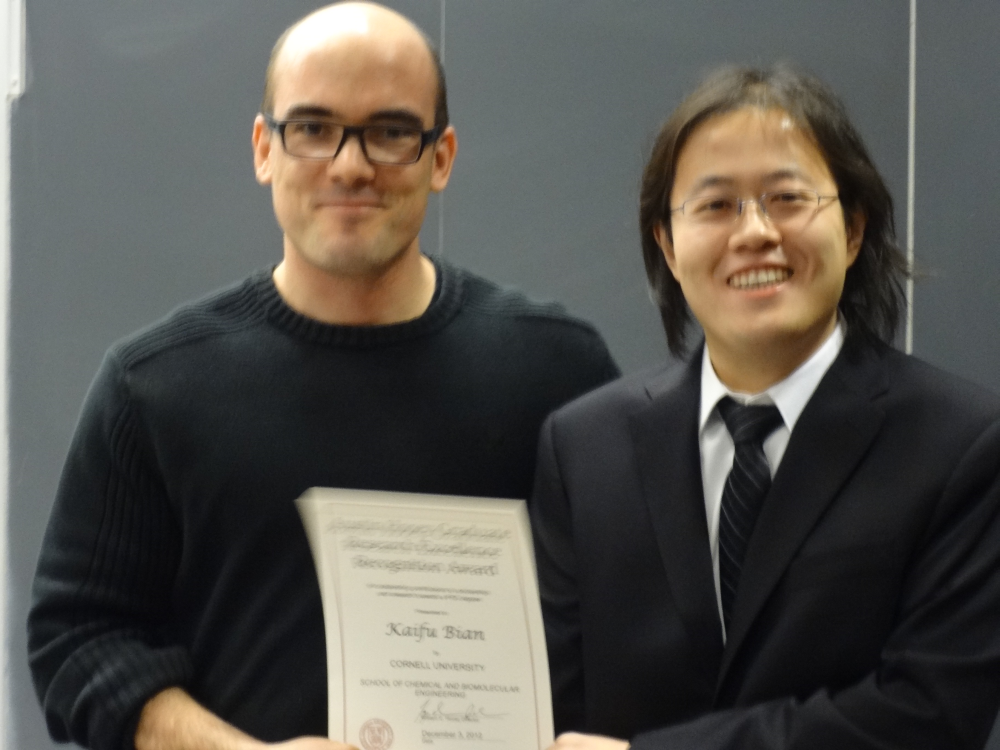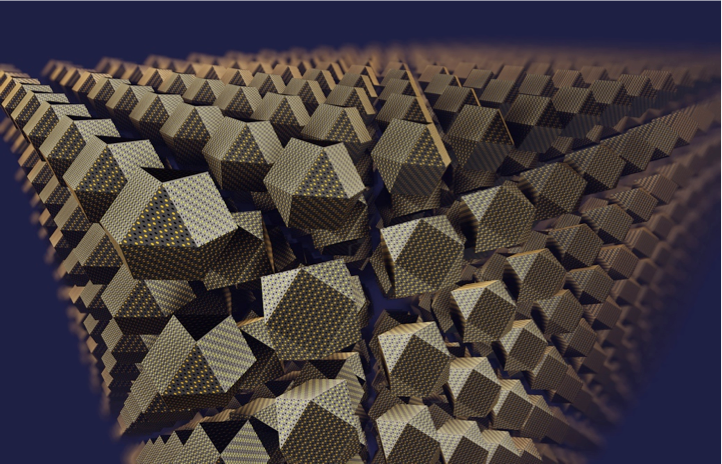X-RAY RUNS: Apply for Beamtime
2017 Nov 1 - Dec 21
2018 Feb 7 - Apr 3
2018 Proposal/BTR deadline: 12/1/17
2018 Apr 11 - Jun 4
2018 Proposal/BTR deadline: 2/1/18
Cornell chemical engineering student Kaifu Bian was recently awarded the 2012 Austin Hooey Award for Outstanding Thesis Research. The Hooey Graduate Research Excellence Recognition Award is the highest award given to a graduate student by Cornell’s School of Chemical and Biomolecular Engineering. This award recognizes excellence in graduate research and service to the research group, department and community. Kaifu’s research focused on fundamental processing-structure-property relationships of nanocrystal assemblies as designer solids. Kaifu’s work in the group of Tobias Hanrath provides important new insights into the fundamental forces governing: (i) the self-assembly of nanocrystal superlattice and (ii) the stability and collective properties of the formed superstructures. These advances were enabled by access to world-class X-ray scattering facilities at CHESS.
In collaboration with Detlef Smilgies at D1 station, Kaifu investigated the thermodynamics and kinetics of superlattice self-assembly in cuboctahedral PbS and PbSe nanoparticles during drop casting and solvent annealing. Using a combination of grazing incidence small- and wide-angle X-ray scattering he showed that the non-spherical particles can form FCC, tetragonal, and BCC lattices along the Bain path; the actual superlattice symmetry attained is correlated to the degree of orientational ordering of individual particles on their lattices sites. The BCC phase thus features the highest degree of orientational order, while particles in the FCC phase have random orientation, as would be expected for the case of the packing of hard spheres [1].

Above: Hooey awardee, Kaifu Bian (right) and his advisor Tobias Hanrath (left), both from the Cornell Department of Chemical and Biochemical Engineering. Below an artist’s view of a BCC superlattice of cuboctahedral lead sulfite nanocrystals displaying orientational order (ligands not shown for clarity).

In collaboration with Zhongwu Wang at B2 station, Kaifu studied the relation between superlattice symmetry and the atomic structure of the nanocrystal cores under external pressure. He found that in orientationally ordered BCC superlattices the atomic transition from rock salt to orthorhombic structure in the PbS cores occurred at a 1.5GPa higher pressure than in the FCC phase; the BCC phase is also more compressible than the FCC phase. The equation of state was obtained for both superlattice symmetries up the pressures of 8 GPa in a diamond anvil cell. The properties of the orientationally ordered BCC superlattice were attributed to a more effective absorption of the loading force compared to the FCC superlattice with random orientational order of the building blocks.
References:
[1] Kaifu Bian, Joshua J. Choi, Ananth Kaushik, Paulette Clancy, Detlef-M. Smilgies, and Tobias Hanrath; "Shape-anisotropy
Driven Symmetry Transformations in Nanocrystal Superlattice Polymorphs", ACS Nano 5 2815–2823 (2011)
[2] Kaifu Bian, Zhongwu Wang, and Tobias Hanrath; “Comparing the Structural Stability of PbS Nanocrystals Assembled in FCC and BCC Superlattice Allotropes”, J. Am. Chem. Soc. 134, 10787−10790 (2012)
Submitted by: Detlef Smilgies, CHESS, Cornell University
1/2/2013
